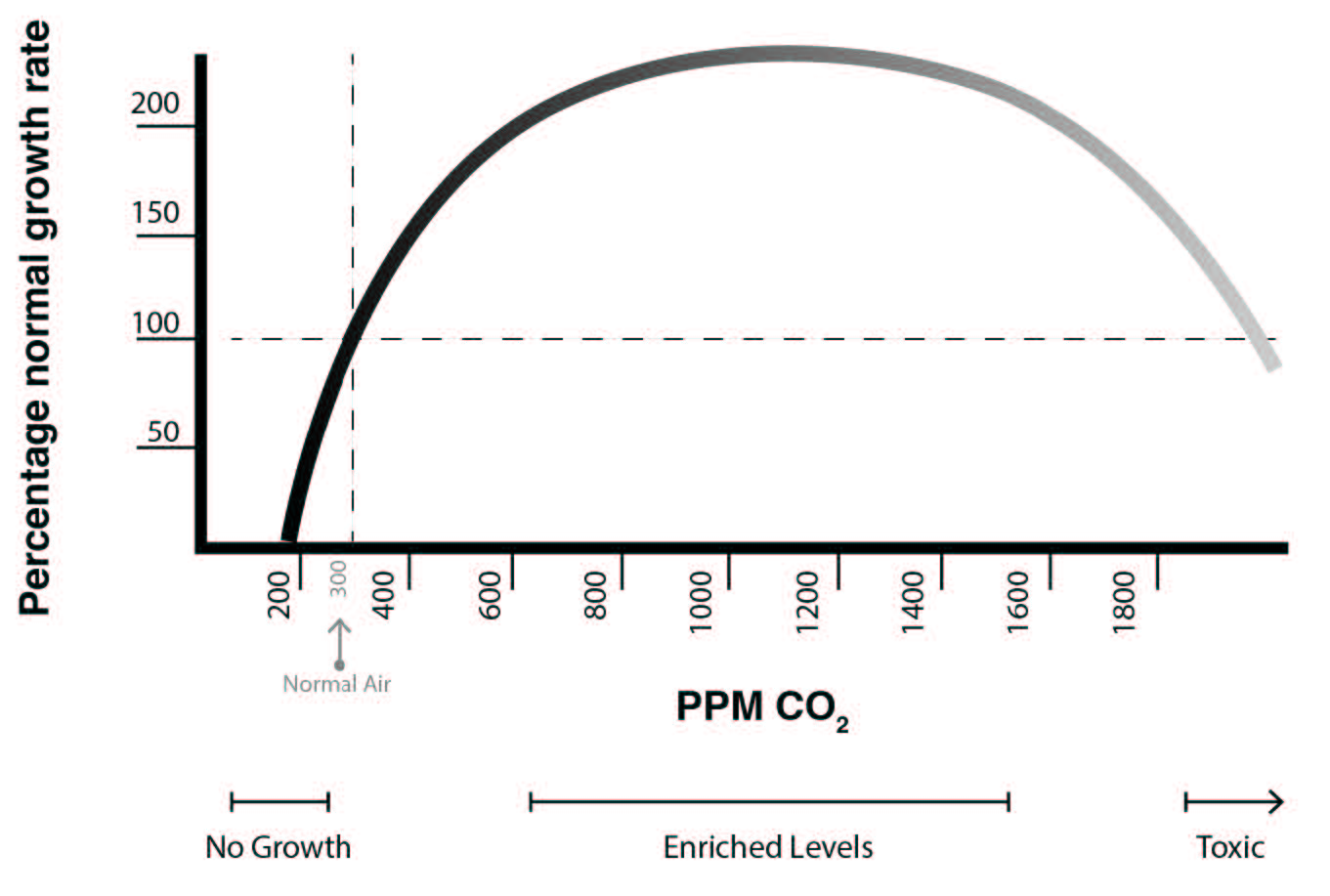
Greenhouse Carbon Dioxide Supplementation - Oklahoma State University
By Megha Poudel and Bruce Dunn. Learn about carbon dioxide, its concentration in relation to plants, supplementation, the effect of supplemental CO2 on different growing factors, sources of carbon dioxide and control and distribution of CO2.
CO2 concentration in relation to plants
Photosynthesis utilizes CO2 in the production of sugar which degrades during respiration and helps in plant’s growth. Although atmospheric and environmental conditions like light, water, nutrition, humidity and temperature may affect the rate of CO2 utilization, the amount of CO2 in the atmosphere has a greater influence. Variation in CO2 concentration depends upon the time of day, season, number of CO2-producing industries, composting, combustion and number of CO2-absorbing sources like plants and water bodies nearby. The ambient CO2 (naturally occurring level of CO2) concentration of 400 parts per million can occur in a properly vented greenhouse. However, the concentration is much lower than ambient during the day and much higher at night in sealed greenhouses. The carbon dioxide level is higher at night because of plant respiration and microbial activities. The carbon dioxide level may drop to 150 to 200 parts per million during the day in a sealed greenhouse, because CO2 is utilized by plants for photosynthesis during daytime. Exposure of plants to lower levels of CO2 even for a short period can reduce rate of photosynthesis and plant growth. Generally, doubling ambient CO2 level (i.e. 700 to 800 parts per million) can make a significant and visible difference in plant yield. Plants with a C3 photosynthetic pathway (geranium, petunia, pansy, aster lily and most dicot species) have a 3-carbon compound as the first product in their photosynthetic pathway, thus are called C3 plants and are more responsive to higher CO2 concentration than plants having a C4 pathway (most of the grass species have a 4-carbon compound as the first product in their photosynthetic pathway, thus are called C4 plants). An increase in ambient CO2 to 800-1000 ppm can increase yield of C3 plants up to 40 to 100 percent and C4 plants by 10 to 25 percent while keeping other inputs at an optimum level. Plants show a positive response up to 700 to need of 1,800 parts per million, but higher levels of CO2 may cause plant damage (Figure 1).




























